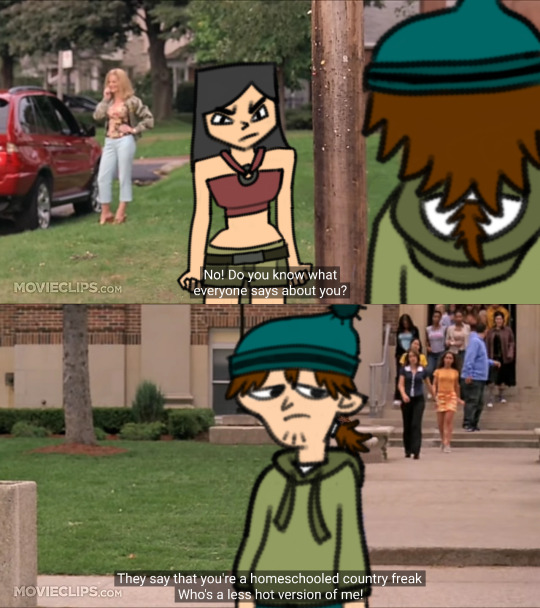#heron island
Explore tagged Tumblr posts
Text
And away they go!
seven_seas_explorer
#Heron Island#Queensland#Australia#hatchlings#baby turtles#heading home#wildlife#ocean life#conservation#cute animals#good luck little ones!#curators on tumblr
3K notes
·
View notes
Text
In 2013, neurobiologist Kristin Tessmar-Raible and her colleagues published some of the most compelling evidence of a molecular moon clock in an ocean creature. They studied the marine bristle worm Platynereis dumerilii, which looks like an amber centipede with tiny feathered oars running the length of its body. In the wild, the bristle worm lives on algae and rocks, spinning silk tubes for shelter. While reading studies from the 1950s and ’60s, Tessmar-Raible learned that some wild bristle worm populations achieve maximal sexual maturity just after the new moon, swimming to the ocean surface and twirling in circles in a kind of whirling dervish nuptial dance. The studies suggested that changing levels of moonlight orchestrated this mating ritual. “At first I thought this was really crazy in terms of biology,” says Tessmar-Raible, who notes that she grew up far from the ocean, “but then I started talking to colleagues in marine biology and realized that this might not be so uncommon.”
To learn more, Tessmar-Raible and her colleagues kept bristle worms in plastic boxes, feeding them spinach and fish food, and simulating typical and aberrant moon cycles with an array of standard light bulbs and LEDs. Worms raised in perpetual light or in entirely moonless day-night cycles never displayed reproductive rhythms. But worms reared with periodic nocturnal illumination synced their spawning rituals to the phases of their artificial moon. As suggested by earlier studies, Tessmar-Raible found light-sensitive neurons in the worms’ forebrains. And genetic sequencing revealed that the bristle worm has its own versions of essential molecular clock genes found in terrestrial insects and vertebrates. Tessmar-Raible’s conclusion is that the worms have a robust lunar clock analogous to the more familiar sun-synced circadian clock. “This is an endogenous oscillator,” she says. “Something in the body preserves the memory of those nocturnal illuminations.”
In similar studies, Oren Levy and his colleagues collected pieces of living corals from Heron Island reef and housed them in large outdoor aquaria, some of which were exposed to ambient sunshine and moonlight, some shaded at night to block all moonlight, and some subjected to dim artificial light from sunset to midnight and then kept in the dark until sunrise. Each day for eight days before the estimated night of mass spawning, the researchers collected bits of corals from the different aquaria and analyzed the activity of their genes. The corals in natural conditions spawned as predicted and expressed many genes only during or just before releasing their gametes. Corals subjected to artificial light and deprived of moonlight displayed anomalous gene expression and failed to release their gametes.
— The Lunar Sea
#ferris jabr#the lunar sea#science#biology#marine biology#animals#animal behaviour#genetics#astronomy#australia#heron island#great barrier reef#kristin teßmar-raible#oren levy#polychaete#platynereis dumerilii#coral#coral reefs#reefs#reproduction#moon#light#circadian rhythm
41 notes
·
View notes
Photo
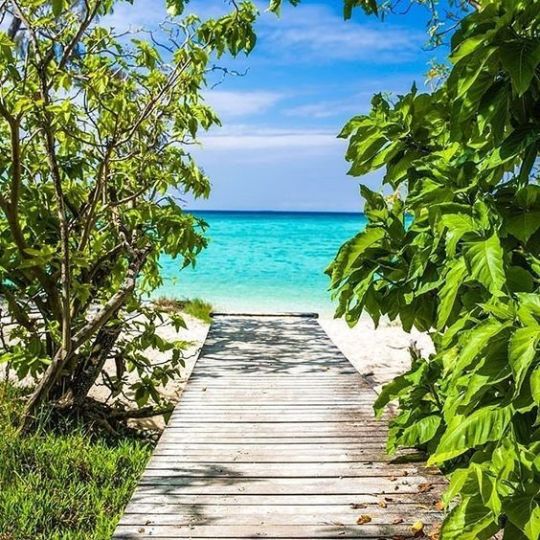
@heronisland by @theblondenomads
#heron island#great barrier reef#southern great barrier reef#queensland#australia#tropical#tropicalcore#jungle#junglecore
7 notes
·
View notes
Text

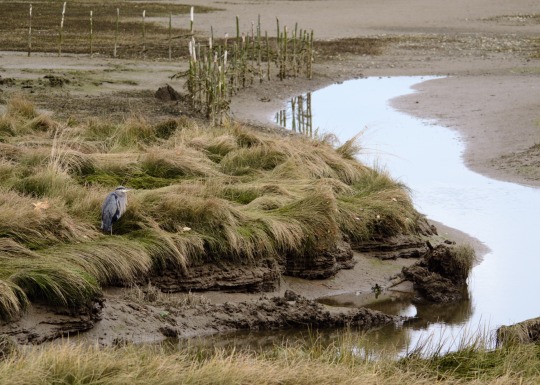
#landscape photography#artists on tumblr#lensblr#birds#original photography on tumblr#nature#vancouver island#nature photography#pnw#birding#bird photography#birdwatching#original photography#great blue heron
2K notes
·
View notes
Text

Heron Neck Light, Penobscot Bay, Vinalhaven, Maine. Before the light station was equipped with a fog bell in 1925, keeper Captain Levi Farnham trained his Newfoundland dog, Nemo to give a warning bark in response to nearby ship whistles in the fog.
#Heron Neck Light#Penobscot Bay#Vinalhaven#Maine#Heron Neck Lighthouse#lighthouse#maine#maine lighthouse#Newfoundland dog#Newfoundland#Newfy#fog#foggy#island#rocky coast#illustration#art#drawing#maine art#maine design#maine artist#maine illustrator#artist
181 notes
·
View notes
Text

Great Blue Heron @ Twilight. July 25, 2024. Cove Island Park, Stamford, CT. (@dkct25)
#daybreak#twilight#Cove Island Park#stamford#Original Photography#Photographers On Tumblr#heron#great blue heron
157 notes
·
View notes
Text

#ranma 1/2#ranma saotome#ranma ½#Chapter 239#Heron Island arc#manga#rumiko takahashi#manga cap#girl ranma
305 notes
·
View notes
Text
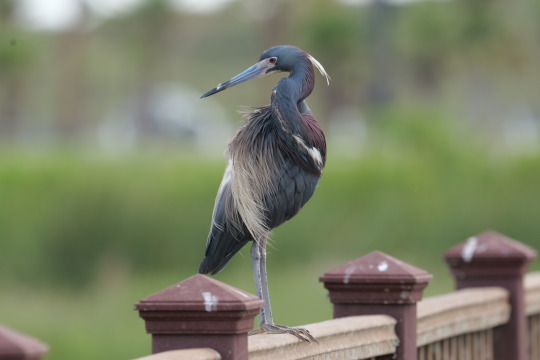
Tricolored Heron (Egretta tricolor)
#Egretta tricolor#birding#wildlife photography#bird photography#heron#Tricolored Heron#south padre island
660 notes
·
View notes
Text

White egrets in Indonesia By: M. Philip Kahl From: The Fascinating Secrets of Oceans & Islands 1972
45 notes
·
View notes
Text
Something different. I really enjoy drawing creatures and birds in particular. A draw-it-in-my-style type of post with a still frame from Miyazaki's film "The Boy and the Heron".

#the boy and the heron#heron#hayao miyazaki#miyazaki#studio ghibli#anime art#anime#anime fanart#fanart#art#manga art#character design#animation#drawinyourstyle#draw it in your style#original art#explosion island#character art#artists on tumblr#my art#artwork#drawing#tumblr draw#painting#creature#my hero academia#levi attack on titan#commissions#commissions open#art commisions
54 notes
·
View notes
Text

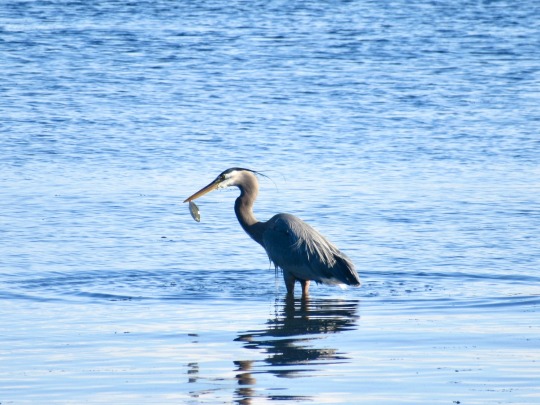
Gone fishing
5-2-24
#photography#original photography#nature photography#animal photography#heron#great blue heron#bainbridge island#seattle#washington#washington state#pnw#puget sound#beach#tw animal death
67 notes
·
View notes
Video
Juvenile White Ibis on Chincoteague Island, Virginia by Kevin B. Moore
#assateague#birds#blackwater#chincoteague#decay#eagle#eastern shore#egret#gbh#heron#hoopers island#ibis#jimmy#landscape#nature#rode#rural#trip#turkey#flickr
56 notes
·
View notes
Text
parallels between the boy and the heron and this painting, plus general analysis

Arnold Bocklin, Island of the Dead. 1880
i want to preface this by saying i am by no means an art history nerd, i just happen to know some stuff about the background of this painting in particular.
as soon as mahito is sucked into the tower floor he is standing at the shore of an island surrounded by an endless ocean. he is dwarfed by a large set of golden gates that say something like "those who seek my knowledge shall perish" and an even taller forest of cypress trees. these features all frame a white dolmen (primitive tomb usually made of giant rocks stacked like below) that beckons to him.
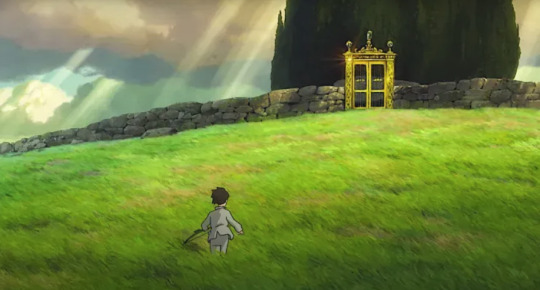
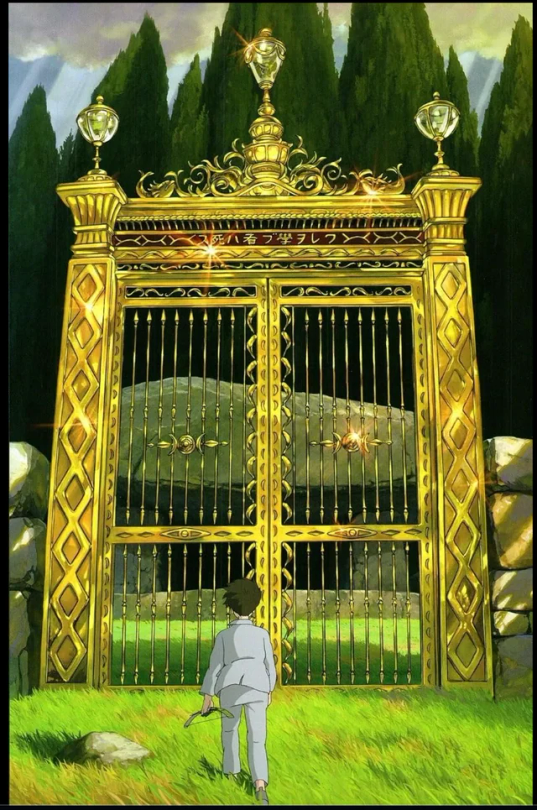
this scene immediately struck me since it has so many of the visual elements of the painting. mahito is even framed in the foreground to be so very small approaching these giant, daunting structures just like the boat heading for the island in the painting. besides the tombs, the cypress trees are also traditionally associated with mourning and death at least in europe/the mediterranean. other ghibli movies have lavish european aesthetics tied to characters (howl, yubaba, etc.) but it feels particularly intimate here given that mahito's great granduncle, the creator and ruler of this world, is apparently european and can only pass on his role to a direct descendant. (btw not saying the gaudy european decor signature of howl and yubaba aren't important to their characterization, it def is! i'm just saying it stood out to me in this movie especially.) the cliffs full of stone entrance passageways are prominent later in the movie as himi takes mahito through the parakeet's domain, and interestingly, in the delivery room where natsuko is, there is another dolmen behind her (can't find pics since the movie hasn't been uploaded yet urgh).
the backstory to the painting continues to parallel to the events of the story! so there's 5 versions of this painting. the first three versions were painted in a cemetery close to bocklin's residence which was also full of white headstones and sculptures, and cypress trees. one of his infant children, one of many children he lost, was buried there. the one i posted above is the first/second-- while bocklin was working on the first, a the soon-to-be wife of a politician visited his studio, saw the wip, and commissioned her own version with the added white figure and coffin to commemorate her first husband who had just died of diphtheria. already somewhat similar to how mahito's mother died in the hospital fire (well. she died from the fire but presumably she was there because she was sick) and when his father shortly remarried. these were also added to the initial wip and stuck in later versions of the painting. bocklin later wrote to her, "you will be able to dream yourself into the world of dark shadows". the movie is also very dreamlike-- it's a fantasy world filled with strange creatures, alternate versions of people he knows, and passages that seem to alter the fabric of time and space. people also seem to forget about it as soon as they leave even after spending long periods of time in it like a dream. the painting is also very dreamlike, but why? the warm lighting, maybe not in the version i posted but in a couple others, may explain it, but the island itself resembles the curtains and stage of a theater (referencing the audio clip below the description). even if it doesn't look EXACTLY like that to you, it's definitely a too-perfect little scene in a nebulous expanse of space. this theatrical quality is also shown in the movie by the parakeet uprising side plot as well as the scene when himi and mahito collapse in front of the delivery room-- the curtain falls directly in front of the viewer over them as though a stageplay just ended. oh and a friend mentioned to me how this is a classic hero's journey plot and mirrors orpheus in the underworld. island of the dead has also directly inspired NUMEROUS other works of art, including other paintings, stage productions, and symphonic poems. apparently the painting was so popular many people in berlin hung prints of it in their homes (i do too)! as i stated above though, a lot of the visual elements in the painting were already traditional symbols relating to death so i don't want to 100% conclude that miyazaki was directly inspired by this painting, he may have just also resonated with those symbols independent of bocklin which i still think is awesome.
the first time we see himi also reminded me of the painting. she's wearing a white dress and standing at the bow of a small wooden boat, and though her intentions are to save the warawara from the pelicans, she inevitably kills some of them too. visually and thematically she's like the white figure at the front of the rowboat in the painting. she acts as a guide for mahito (analogous to the rower? he traveled to this world of his own volition but needed a guide) for a good part of the movie and is a collage of life and death. she is a younger but kind of omniscient version of his dead mother; she's known all along she is mahito's mother but is about to be born into the world by the end of the movie and accepts her fate happily. she can control fire which envelops her like how she died in the real world, but is harmless to the touch unless she directs it as a weapon, and as we see with the warawara and pelicans it helps creation but also destroys much like fire's role in the natural world. natsuko, though a separate person from himi, is still connected as a sibling, and we see her wandering into the forest at the beginning of the movie while wearing white like himi, back turned to mahito, and that is what prompts him to first enter the tower. the strange nature of her character that doesn't adhere to a proper time or space parallels the way the white figure completely stands out in the painting, at least the ones with darker lighting. another crazy parallel surrounding fire and wwii between the painting and the movie is that the fourth version of this painting was destroyed during wwii due to bombing, again like how mahito's mother's hospital was presumably set on fire by bombing during the war.
the looming effects of war alluded to throughout the movie eventually tie into its resolution, when mahito accepts his new family that he initially rejected, his own imperfect being, and the fact that one must seek out love to be happy in this bitch of a world. his great granduncle is confused as to why mahito wouldn't want to recreate his own world like him. why would you want to return to the world that killed your mother and rejects you as a person? the world that forces your people to die in war and will eventually drop the deadliest weapon mankind has ever seen even a century from now onto your home? you can make everything perfect here! he's created something of a "paradise" himself, full of lush tropical plants, parakeets, and strange insects (some of them looked like the bugs from nausicaa, another fantastical world of lush nature which is also threatened by war. interesting), almost like a garden of eden, and it so happens to be at the very top of the tower. funnily enough, bocklin also painted this several years later:
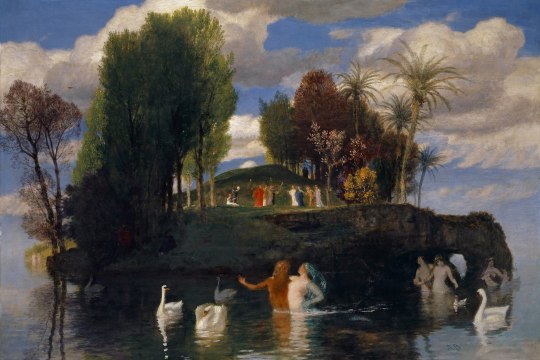
Arnold Bocklin, Island of Life. 1888
i don't know much about this one so idk if it's an explicit companion piece to the island of the dead but it certainly looks like it. the similarities are now less apparent to the movie if there are any, it's much less lush but there are exotic plants and uh birds and stuff. this is definitely more likely a case of shared inspiration from the symbols themselves rather than movie directly looking at the painting. anyway clearly the promise of a perfect paradise isn't real, as this is interrupted by a war of his own unwitting creation, the uprising of the parakeets he wanted to breed in a paradise that literally bring about the end of the world. no world will ever be perfect when left long enough to its own devices. life finds a way! plus, this world was created through so much death (the construction workers in hazardous conditions, the way the tower keeps spiriting people away. btw in the english sub mahito's dad calls the whole ordeal a "disappearance" but he says "kamikakushi" in japanese which means "hidden by god" in reference to people who mysteriously disappeared as if from supernatural circumstances and yes that's the word they used in the japanese title of spirited away!!!) and is on the verge of collapsing from reality every three days just because of some building blocks?? the real world may be on fire but it'll go out/burn less badly someday, and at least it won't completely disappear in a snap, not in an easily imagined timescale for a human anyway. it's up to you to make the best of it, and this is what mahito decides. there are also visual allusions to other ghibli movies about the constantly present threat or consequences of war. the only other landmark aside from the island mahito lands on is a line of ships which kiriko later tells him are all fake. it immediately reminded me of the stream of planes in porco rosso which were the souls of dead fighter pilots moving on. the shadow people in the swamp were also reminiscent of those in the train in spirited away, which are never explained to my knowledge but the given that spirited away's characters are largely spirits and the way souls are so similarly designed in this movie makes me feel that they were also souls of people in spirited away.
through this imagined otherworld, there is also the blurring of lines between life and death, reality and imagination. himi plus her dyad with natsuko (they're sisters AND they look exactly the same AND both are mother figures to mahito) are great examples of this. mahito's mother is gone, he knew this and set foot into the world anyway. he rejected natsuko as his new mother but in going through the struggles of the tower he comes to accept familial love for her and even keeps confusing "natsuko" and "mom" while reaching out to her in the delivery room. a family is made up of different people but inevitably you will see each other in each person. in the delivery room scene we see the paper hanging from the ceiling lash out to attack and stick to mahito like tape, it even leaves red marks on him. this is one of the best scenes in the movie to me because of its visual contrast to him rushing to save his mother in the fire. in the fire scene, the real world around him is blurred and distorted and at times so is mahito and especially his mother. the fire doesn't seem to burn him or his clothes (i could be remembering that wrong tho) and the scene cuts off before it shows him possibly going in further. in the delivery room, everything is drawn with clean lineart, no stylization. there is no mistaking the reality of this situation even though this world is conjured, the dawning realization upon mahito that this person is his mother is so visceral that he actively fights through the paper literally snapping its jaws and natsuko spitting her hatred towards him. when mahito is ready to leave the tower, himi leaves through a separate door to be born as his mother sometime in the past though she is not a warawara and knows what has happened/will happen, an exception that further demonstrates the nonlinear nature of time and space in the movie.
after coming out of the tower, the heron tells mahito he should forget everything that happened in there. even his grandmother seemed to have forgotten the whole year she spent in there (it seems like tower time reflects irl time judging by the events of the movie). anything that comes out doesn't just disappear, it transforms into a real-life counterpart as we saw with the pelicans leaving as they were (presumably minus the ability to speak) and the parakeets going from big bloodthirsty things to regular parakeets. so mahito can't just forget, especially because he comes out changed from his experiences in there, not just himself personally but also his changed relationships with natsuko and the heron, and also his little souvenirs. then the movie abruptly ends with mahito narrating that they left for tokyo again shortly after the war ended. i like to think that this was a hopeful ending where mahito maintained that character development and was able to welcome natsuko and his new sibling into his family while being able to seek more friends and family in the future. i've seen other analyses talking about how this movie was semi-autobiographical for miyazaki and i can see it, how events early in his life shaped his personality and how he had to fight to find beauty in a world that otherwise treated him poorly, so i'm glad he ended the movie on that note, although in less words. pretty similar to how spirited away ended, although there was arguably more loss involved, but still hopeful, and that's what i find so powerful about this movie. and like this movie, spirited away involves a dyad between yubaba and zeniba as a device for the hardships and beauty of life, how they're not so discreet at times. as a last kindasorta tie-in to bocklin's work, i'll point again to the island of life which was created after the island of the dead, plus a composition directly inspired by the island of the dead, a symphonic poem with the same title written by sergei rachmaninoff. the last time i listened to this was in high school and it's like. 20 minutes long so i'm too impatient to give it a relisten now but from my vague recollection plus some quick searches it's a very somber piece that escalates into emotional climaxes yet still contains warmer tones, and goes back to the same "rowing" motif at the end. it weaves together evocations of life and death in one piece, also illustrating how the two really are so closely connected.
tl;dr, this was me the entire movie because miyazaki SEEMS to be heavily inspired by this one symbolist painting i happen to like a lot:
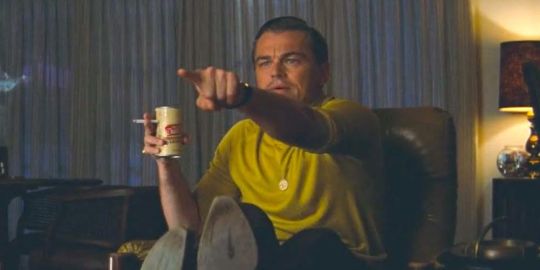
also also here's a self portrait of bocklin:
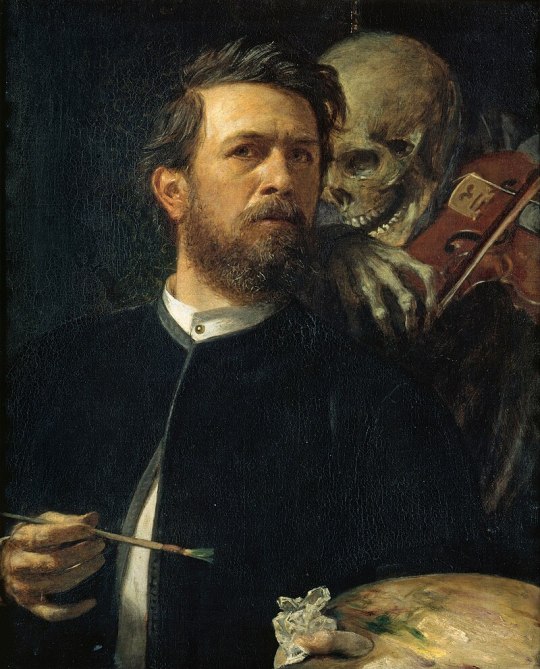
yes, all of his paintings are that cool.
#i'm so excited about this painting!!#there's so many freaking similarities in not just the painting itself but its conception#the boy and the heron#kimitachi wa do ikiru ka#how do you live#studio ghibli#hiyao miyazaki#arnold bocklin#island of the dead#isle of the dead#tweet
71 notes
·
View notes
Photo

📍Heron Island, Queensland, Australia 📸 @theblondenomads
#jungle#junglecore#exotic#nature#adeventure#travel the world#wanderlust#tropical#tropicalcore#heron island#queensland#australia
1 note
·
View note
Text

Great Blue Heron
#birding#birds#great blue heron#nature#nature photography#vancouver island#pnw#bird photography#birdwatching#queue#original photography on tumblr
296 notes
·
View notes
